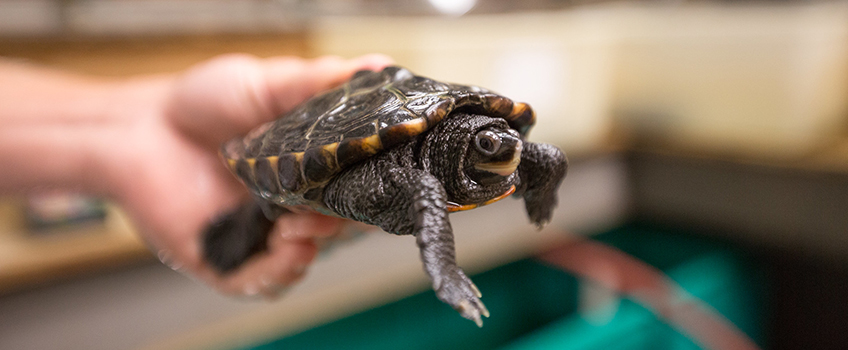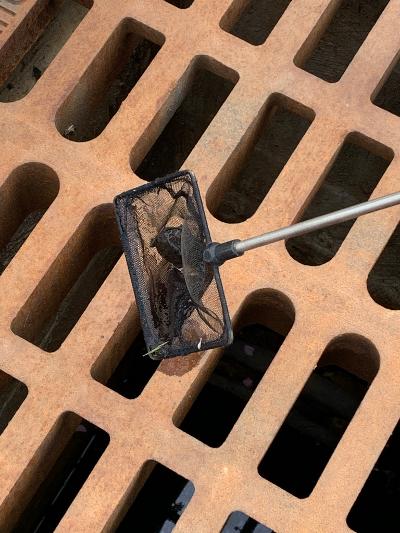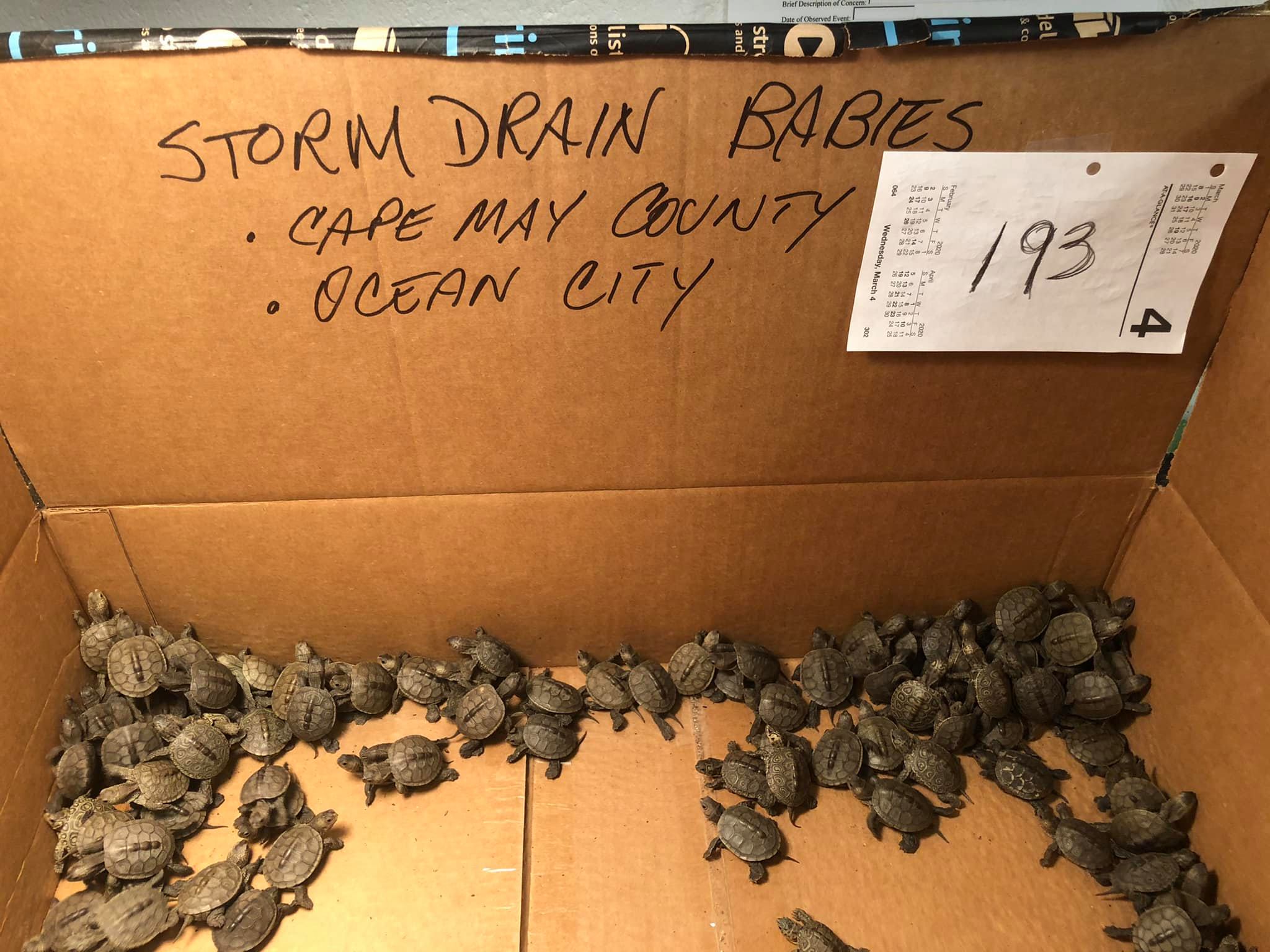Rescued Terrapins Get a Head Start at Stockton

Galloway, N.J. - In the past few weeks, Stockton University's Vivarium has welcomed 826 Diamondback
terrapin hatchlings that hid from the winter temperatures underground in their nests.
These spring emergers that survived for months off of their yolk sacs were scooped
out of storm drains in Ocean City, N.J. by Marlene Galdi and Joanne Freas and in Ventnor by
alumna Evelyn Kidd and friends.
"Eggs laid later in the year hatch out underground and spend the winter in the nest
chamber surviving off their yolk sac," said John Rokita, assistant supervisor of Academic
Lab Services, when explaining spring emergers.
When the warmth of spring awakens the tiny terrapins, their perilous journey begins.
After surviving a treacherous traffic crossing, a baby terrapin can meet yet another
obstacle--the curb. Galdi and Freas regularly look for crossing terrapins to give
them a hand. One day, the women discovered that curbs aren't the only obstacle for
the quarter-sized turtles. They are small enough to slip through the cracks of storm
drains.  "As we passed the storm drains, we noticed that there was activity in them. When we
looked closer, we saw that there were baby terrapins swimming in the storm drains,"
said Galdi.
"As we passed the storm drains, we noticed that there was activity in them. When we
looked closer, we saw that there were baby terrapins swimming in the storm drains,"
said Galdi.
They crafted a custom scooper from a telescopic aquarium net attached to a bamboo
pole and are pleased with how their invention works. They enrolled their rescued terrapins
in a head start program at the Stockton Vivarium where they will receive expert care
from Rokita and his staff.
Kidd discovered storm drain terrapins thanks to her brother's curiosity and has been
making rescues for years. She began training local kids in her neighborhood to expand
her rescue efforts.
Although the water in storm drains will eventually flow into the bay, the unfiltered
rainwater and runoff from roads and impervious surfaces is not a safe or healthy habitat.
"A good percentage of the terrapins that do come from storm drains have eye infections.
They haven't been in the cleanest water because everything runs into the storm drains,"
explained Rokita.
Terrapins that arrive with an infection are isolated from the general population in
the Vivarium until they are healthy.
Predators may not be in the drains, but they are lurking where they empty. "The water
goes out into the big open bay, and they are little turtles. They are just like fish
food out there," said Rokita.
In the coming weeks, more terrapins will be arriving from a conservation partnership
with The Wetlands Institute in Stone Harbor that extracts and incubates eggs from
road-killed females.
Hatchlings spend about a year at Stockton under optimum growing conditions to give
them a head start prior to being released back into the wild. A head-started terrapin
is 2-3 times larger than a wild terrapin of the same age. Take a photo tour of the Vivarium to learn how the terrapins grow strong at Stockton.
To date, there are 1,108 terrapins receiving care at Stockton. Student workers Brandon
Henry and Heather Bariso conducted a census count on May 4. This year's 826 new terrapins
join last year's rescues, head starters raised from road-killed females and eight
non-releasable adults (all from long-term captive situations). "That a lot of mouths
to feed daily!" said Rokita.
Photo: Lester Block
HELP! I found a terrapin hatchling in the street. What can I do to help?
The Vivarium at Stockton has reached capacity, but we asked John Rokita what you can
do to give a healthy terrapin hatchling the best chance at survival. Here are his
recommendations.
- Place it in a shallow container of room temperature water (fresh would be okay just for a day or so) filled just to the top of the carapace or shell. Place a flat rock or half of a clam shell in the container to provide a haul out area if needed.
- Place the container inside a protected area to prevent a passing gull or crow flying overhead from seeing it and having a terrapin snack.
- If it appears healthy and active with no eye infections or injuries present, then the finder could release it at dusk into a tidal creek or bay area; preferably a site with good hiding places like shells in the water and or Spartina (marsh grasses growing right at the edge or into the water). This will give the emergers ample places to hide come dawn and the threat of diurnal predators.
If the terrapin you find is not healthy, you should contact your nearest licensed wildlife rehabilitation facility.
In the Headlines
- The Tonight Show starring Jimmy Fallon (starting at 5:28)
- Newsweek
- Nerdist
- People
- NJ.com video
- 6ABC video
- CNN
- Downbeach.com
Reported by Susan Allen



